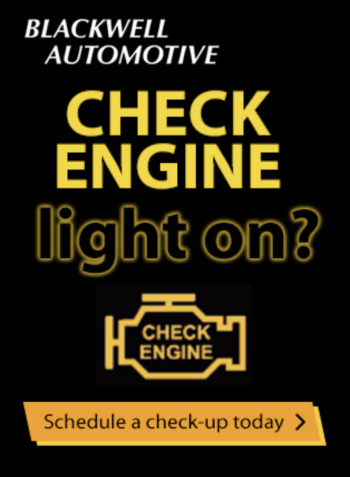

Welcome to Bumper to Bumper Radio!
Drive in anxious and cruise out confident with the best automotive information for your vehicle! Tune in to KTAR News 92.3 every Saturday from 11 a.m. to noon as Matt Allen helps listeners with their car problems. The show call in number is 602-277-5827.
Latest News From Bumper to Bumper Radio

With the national average at $2.12, pump prices are, on average, 50-cents less than this time last year. Crude oil is the biggest driver of the less expensive gas prices. In the last week, crude oil prices dropped to $22/bbl – a low not seen since 2002. Crude oil accounts for nearly 60% of the retail pump price. When crude is cheap, gas prices follow suit.
“Typically gas prices start to trend more expensive at the beginning of spring, especially as motorists get out to enjoy the warmer weather and travel for spring break. That is not the case this year,” said Jeanette Casselano, AAA spokesperson. “With Americans urged to stay at home and practice social distancing to slow the spread of coronavirus, we are seeing less traffic on the roadways which will ultimately drive down demand, increase gasoline supply and push pump prices less expensive for the foreseeable future.”
Motorists do not need to rush to the pumps to fill-up. Currently, there is ample U.S. gasoline supply and no disruption to distribution at gas stations.
Across the country, state averages are less than $3/gallon except in Hawaii ($3.47) and California ($3.21). Twenty-nine states have gas price averages at $2.10 or less with Oklahoma ($1.71) carrying the cheapest in the country.
Today’s national average ($2.12) is cheaper on the week (-13 cents), month (-35 cents) and year (-50 cents).
Quick Stats
The nation’s top 10 largest weekly decreases are: Wisconsin (-24 cents), Oklahoma (-21 cents), North Dakota (-20 cents), Ohio (-19 cents), Michigan (-18 cents), Kentucky (-17 cents), Minnesota (-15 cents), Maine (-15 cents), South Dakota (-15 cents) and California (-14 cents).
The nation’s top 10 least expensive markets are: Oklahoma ($1.71), Ohio ($1.78), Wisconsin ($1.81), Kentucky ($1.82), Indiana ($1.83), Mississippi ($1.84), Michigan ($1.84), Texas ($1.85), South Carolina ($1.86) and Missouri ($1.86).
We would like to extend our sincere wishes that you all stay healthy and safe as we all work to get through this unprecedented time period together.
All of our Bumper to Bumper Radio Member Shops are taking all the necessary precautions to help prevent the spread of the COVID-19 (Coronavirus). The health and safety of our customers and employees are our top priority. We know that you depend on us to provide the service that you can rely on to keep your vehicles dependable and on the road.
Please check with any of our individual member shops as to their specific safety measures, policies and services they are providing, but know that virtually all of our Member shops are proactively providing additional safety measures to protect your health.
Services Include:

As crude oil prices trend close to $30/bbl, Americans are seeing pump prices plummet across the country. On the week, gas price averages in 35 states decreased by double-digits, pushing the national average to $2.25, the cheapest price point of the year.
“The national gas price average is 13 cents cheaper on the week and nearly 20 cents less than the beginning of the month. These are significant decreases in just 7 and 16 days,” said Jeanette Casselano, AAA spokesperson. “AAA expects gas prices to continue trending cheaper, with the high likelihood of the national average hitting $2/gallon before the end of March.”
During this uncertain time of COVID-19, gas prices are declining despite increasing gasoline demand and decreasing U.S. stock levels.
Quick Stats
The nation’s top 10 largest weekly decreases are: Ohio (-27 cents), Kentucky (-21 cents), Michigan (-21 cents), Wisconsin (-21 cents), Indiana (-19 cents), Illinois (-19 cents), Oklahoma (-15 cents), Iowa (-15 cents), Maine (-15 cents) and Minnesota (-15 cents).
The nation’s top 10 least expensive markets are: Oklahoma ($1.92), Texas ($1.96), Mississippi ($1.96), South Carolina ($1.97), Ohio ($1.97), Indiana ($1.97), Missouri ($1.98), Kentucky ($1.99), Louisiana ($2.00) and Alabama ($2.00).
Great Lakes and Central States
Some of the largest weekly pump price savings in the country can be found in the Great Lakes and Central states. Eight out of the top 10 largest weekly decreases are states from the region: Ohio (-27 cents), Kentucky (-21 cents), Michigan (-21 cents), Wisconsin (-21 cents), Indiana (-19 cents), Illinois (-19 cents), Iowa (-15 cents) and Minnesota (-15 cents). All states in the region saw double-digit decreases, with South Dakota (-10 cents) seeing the smallest decrease on the week.
With the substantial drops at the pump, state gas prices in the region are relatively cheap, ranging from as low as $1.98 in Missouri to a high of $2.30 in Illinois.
With a draw of 1.8 million bbl, the Great Lakes and Central states region saw its first substantial drop in gasoline stocks in two months, according to the Energy Information Administration’s latest report. At 58 million bbl, stock levels remain healthy and in line with levels this time last year. If stocks were to decrease again in the coming week that would traditionally mean a pump price increase, but given current trends it’s more likely gas prices would decrease.

Drivers who live in cold and wet climates are all too familiar with what happens to roadways when the ice begins to thaw or flooding occurs. Potholes appear and they are a major pitfall of springtime driving. While hitting one can give you a jolt, it can also seriously damage your vehicle.
The non-profit Car Care Council urges motorists who have hit a pothole to watch out for the following warning signs that key safety-related systems may have been damaged:
Steering and suspension: Loss of control, including swaying when making routine turns, bottoming out on city streets or bouncing excessively on rough roads
Alignment: Pulling in one direction, instead of maintaining a straight path, and uneven tire wear
Tires: Low tire pressure, bulges, blisters on the sidewalls or dents in the wheel rim
“We recently surveyed drivers throughout the country and found that nearly all have hit a pothole at some point, but only one-third of those motorists had their vehicle checked after doing so,” said Rich White, executive director, Car Care Council. “Potholes can pack a powerful punch, adversely affecting a vehicle’s handling and performance. If you hit one, be sure to look for the warning signs of damage and have your vehicle inspected to ensure safe, dependable operation.”

- Boston (149 hours lost due to congestion, which equates to more than six days) ranked as the most congested city in the U.S. for the second consecutive year, followed by Chicago (145 hours), Philadelphia (142 hours), New York City (140 hours) and Washington D.C. (124 hours)
- Bogota, Columbia topped the list of most congested cities in the world, with drivers losing 191 hours a year
- Los Angeles holds the two worst corridors in the U.S., where drivers on the US-101 and I-5 waste 80 and 76 hours per year at peak hours in congestion, respectively
- Philadelphia, Washington D.C. and San Francisco have the three slowest last mile speeds of 10 MPH in the U.S., meaning it is faster to bike than drive or taking the bus
- Congestion delays have decreased in four of the five most congested cities in the U.S., led by Washington D.C.'s 11 percent reduction
KIRKLAND, Wash., March 9, 2020 -- INRIX, Inc., a world leader in transportation analytics and connected car services, today published the 2019 Global Traffic Scorecard that identified and ranked congestion and mobility trends in more than 900 cities, across 43 countries. The report found that on average, Americans lost 99 hours a year due to congestion, costing them nearly $88 billion in 2019, an average of $1,377 per year. From 2017 to 2019 the average time lost by American drivers has increased by two hours as economic and urban growth continue nationally.
In the U.S., the 2019 Global Traffic Scorecard analyzed congestion and the severity of it in the top 66 urban areas. For the second consecutive year, Boston ranked as the most congested city in the U.S. with the average commuter in the metro area losing 149 hours per year to congestion, costing $2,205 per driver in time lost. Chicago (145 hours, $2,059 lost), Philadelphia (142 hours, $2,016 lost), New York City (140 hours, $1,988 lost) and Washington D.C. (124 hours, $1,761 lost) rounded out the Top 5. While known historically for its congestion, Los Angeles' (ranked sixth in congestion; 103 hours lost in 2019) constant gridlock does not have the severity as the other top-ranked cities due to its sprawling geography and massive road network. On the other hand, Wichita, Kansas, for the second year in a row, had the lowest congestion levels in the U.S. with drivers losing less than two hours a year.
"Congestion costs Americans billions of dollars each year. However, it appears to be stabilizing in some of the country's most congested metros – with delays raising roughly three percent nationwide since 2017," said Trevor Reed, transportation analyst at INRIX. "The continued innovation and investment in smarter roadway management is showing early signs of progress. To reflect an increasingly diverse mobility landscape, the 2019 Global Traffic Scorecard includes both public transport and biking metrics for the first time."
The Most Congested Corridors in the U.S.
Los Angeles holds the top two worst corridors in the U.S., where drivers on the US-101 and I-5 waste 80 and 76 hours per year at peak hours in congestion, respectively. In each case, the corridor uniquely serves a large geographic area with limited alternatives. In the case of US-101, it cuts through the Hollywood Hills, while I-5 runs diagonally into the downtown core across numerous other highways.
























